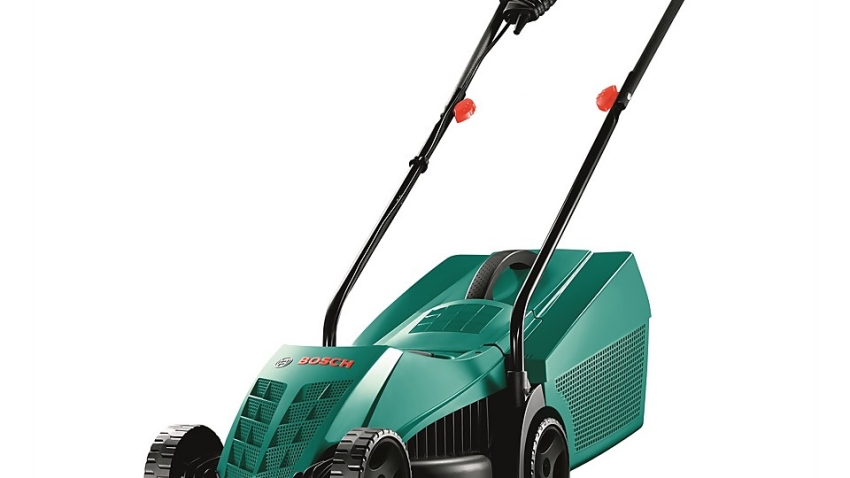
The Man Who Mowed the Way: The Invention of the Lawnmower
The manicured lawns that adorn countless homes and public spaces today are a testament to a simple yet ingenious invention: the lawnmower. But who was the visionary behind this tool that has transformed our landscapes? To answer this question, we must delve into the annals of history.
Early Lawn Care: A Laborious Task
Before the advent of the lawnmower, maintaining a well-groomed lawn was a time-consuming and physically demanding task. People relied on scythes, sickles, and later, horse-drawn mowers to cut grass. These methods were not only inefficient but also required considerable manual labor.
The Birth of the Modern Lawnmower
The Industrial Revolution, with its rapid technological advancements, paved the way for the development of the modern lawnmower. While several inventors contributed to its evolution, one name stands out: Edwin Beard Budding.
Budding, an English engineer and inventor, is widely credited with patenting the first practical lawnmower in 1830. His invention was a significant departure from previous methods, as it employed a cylindrical blade that rotated horizontally. This design was more efficient and less labor-intensive than traditional mowing techniques.

Early Challenges and Improvements
However, Budding’s early lawnmowers were heavy and cumbersome, requiring considerable physical effort to operate. They were also expensive, limiting their widespread adoption. Nevertheless, Budding’s invention sparked interest and innovation in the field of lawn care.
Over the next few decades, several inventors and manufacturers refined the design of the lawnmower. Key improvements included:
- Lightweight Materials: The use of lighter materials, such as cast iron and steel, reduced the weight of lawnmowers, making them easier to maneuver.
- Improved Blade Design: Innovations in blade design, including the introduction of reel-type and rotary blades, enhanced cutting efficiency and precision.
- Engine-Powered Mowers: The development of internal combustion engines revolutionized lawn care by powering self-propelled and riding mowers.
The Rise of the Modern Lawn Mower
The 20th century witnessed a significant surge in lawnmower production and innovation. Companies such as Lawn-Boy, Toro, and John Deere introduced a wide range of models to cater to different needs and preferences. These mowers incorporated advanced features like electric starters, mulching capabilities, and automatic drive systems.
Today, lawnmowers come in various types, including:
- Reel Mowers: These manual mowers use a cylindrical blade to cut grass, offering a clean and precise cut.
- Rotary Mowers: Powered by gasoline or electricity, rotary mowers use a rotating blade to cut grass.
- Riding Mowers: These self-propelled mowers allow the operator to sit while cutting grass, making it a convenient option for larger lawns.
The Impact of Lawnmowers on Society
The invention of the lawnmower has had a profound impact on society. It has transformed the way we maintain our lawns, making it a more efficient and enjoyable task. Additionally, it has contributed to the aesthetic appeal of our communities, promoting a sense of pride and well-being.
Beyond its practical applications, the lawnmower has also played a role in shaping popular culture. It has been featured in countless films, television shows, and advertisements, often symbolizing suburban life and the American Dream.

Development of early lawnmower prototypes
The modern lawnmower, a seemingly simple tool, has a rich history rooted in innovation and necessity. Let’s delve into the early prototypes that paved the way for the efficient and convenient lawn care we enjoy today.
The First Mechanical Mower
The pivotal moment in lawn care history arrived in 1830 when English engineer Edwin Beard Budding patented the first mechanical lawn mower. Inspired by a cloth-cutting machine, Budding’s invention employed a series of blades arranged around a cylinder to trim grass. This early prototype was a significant departure from the traditional methods of scythe and sickle, offering a more efficient and less labor-intensive approach.
Early Innovations and Challenges
While Budding’s invention was groundbreaking, early lawnmowers faced several challenges:
- Weight and Size: These early machines were heavy and cumbersome, requiring significant physical effort to operate.
- Cost: The initial cost of lawnmowers was prohibitive for many, limiting their widespread adoption.
Despite these challenges, inventors continued to refine the design and improve the functionality of lawnmowers. Key innovations included:
- Lightweight Materials: The adoption of lighter materials like cast iron and steel reduced the weight of lawnmowers, making them more user-friendly.
- Improved Blade Design: Innovations in blade design, such as the introduction of reel-type and rotary blades, enhanced cutting efficiency and precision.
The Rise of Power-Driven Mowers
The Industrial Revolution brought about significant advancements in technology, including the development of internal combustion engines. This breakthrough led to the creation of power-driven lawnmowers, which revolutionized lawn care.
-
- Gas-Powered Mowers: Early gas-powered mowers were heavy and noisy but offered greater power and efficiency compared to manual models.
- Electric Mowers: Electric mowers, while less powerful, were quieter and more environmentally friendly.
The Impact on Society
The invention of the lawnmower had a profound impact on society:
- Increased Efficiency: Lawn care became a more efficient and less time-consuming task.
- Aesthetics: Well-manicured lawns became a symbol of status and prosperity.
- Leisure Time: The reduced effort required for lawn care allowed people to enjoy more leisure time.
The early prototypes of the lawnmower laid the foundation for the diverse range of models available today. From manual reel mowers to powerful riding mowers, the evolution of lawn care technology continues to shape our outdoor spaces.
The Future of Lawn Care
As technology continues to advance, we can expect to see further innovations in lawnmower design. Battery-powered mowers are becoming increasingly popular, offering a quieter and more environmentally friendly alternative to gasoline-powered models. Autonomous mowers, equipped with artificial intelligence, are also emerging, promising to revolutionize lawn care.
While the specific details of the future of lawn care remain uncertain, one thing is clear: the lawnmower will continue to play a vital role in shaping our landscapes for generations to come.
Rise of electric and robotic lawnmowers
The world of lawn care is undergoing a quiet revolution, driven by the rise of electric and robotic lawnmowers. These innovative devices are transforming the way we maintain our lawns, offering a more efficient, eco-friendly, and convenient solution.
Why Electric and Robotic Mowers?
Environmental Benefits:
- Reduced Emissions: Electric and robotic mowers produce zero emissions, contributing to cleaner air and a healthier environment.
- Lower Noise Pollution: These mowers operate at significantly lower noise levels compared to traditional gas-powered models, making them ideal for noise-sensitive neighborhoods.
Convenience and Efficiency:
- Automated Operation: Robotic mowers can be programmed to mow your lawn automatically, saving you time and effort.
- Precise Cutting: Advanced sensors and GPS technology enable these mowers to navigate your lawn with precision, ensuring a clean and even cut.
- Remote Control: Many models offer remote control capabilities, allowing you to monitor and control your mower from your smartphone.
Cost-Effective:
- Lower Operating Costs: Electric mowers have lower operating costs compared to gas-powered models, as they don’t require fuel or oil changes.
- Reduced Maintenance: Robotic mowers require minimal maintenance, further reducing long-term costs.
The Future of Lawn Care
As technology continues to advance, we can expect to see even more innovative and efficient lawn care solutions. Some potential future developments include:
- AI-Powered Mowers: Advanced artificial intelligence will enable mowers to learn and adapt to different lawn conditions, optimizing their performance.
- Solar-Powered Mowers: Solar-powered mowers will eliminate the need for charging and provide a truly sustainable solution.
- Modular Design: Modular designs will allow for easy customization and repairs, extending the lifespan of these devices.
The rise of electric and robotic lawnmowers marks a significant step towards a greener and more convenient future. By embracing these technologies, we can enjoy well-maintained lawns while minimizing our impact on the environment.

The invention of the lawnmower is a testament to human ingenuity and the relentless pursuit of efficiency. By simplifying a once-arduous task, it has enriched our lives and transformed the way we interact with our outdoor spaces. As we look to the future, we can appreciate the legacy of Edwin Beard Budding and the countless inventors who have contributed to the evolution of this remarkable tool.












Leave a Reply